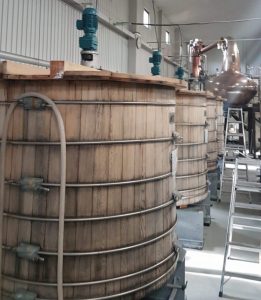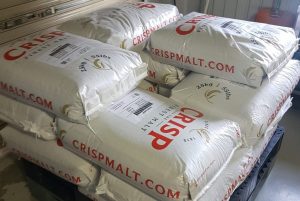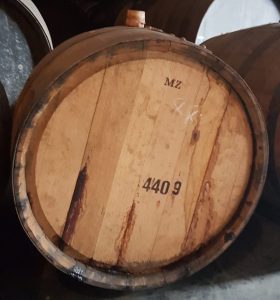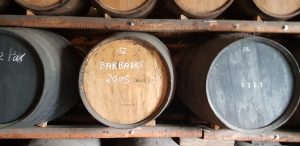Ardnahoe Distillery – Youngest of Islay (At the Moment)
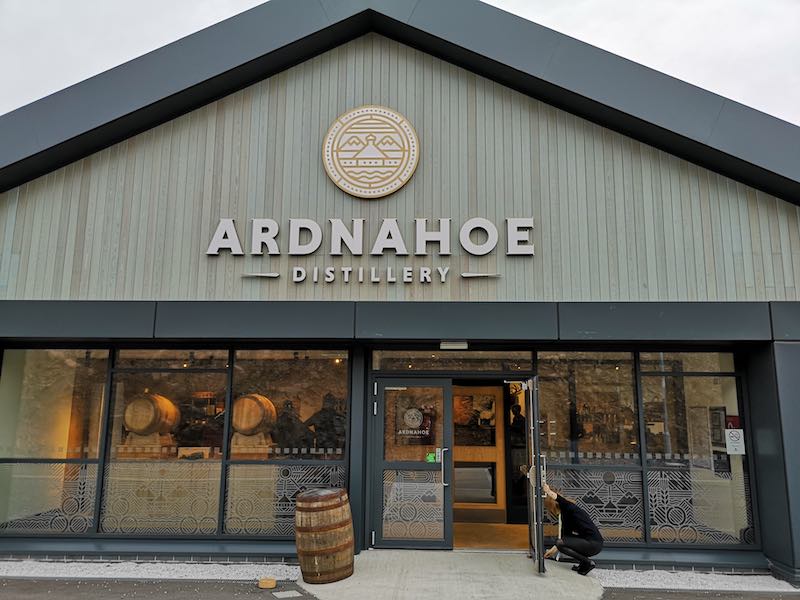
Ardnohoe Visitor Centre
Ardnahoe Distillery is the newest setup on Islay, and we arrived bright and early to the distillery on our tour day! As you can see in our picture above, the visitor centre team member was just opening up for the day! Hahaha! Talk about enthusiasm and “crazy whisky people” – that’s us!
Now, the relatively new distillery has an awesome team of people right at the front of their visitor centre. We went in and got ourselves signed in for our booked tour. As we were about 30 minutes early, we had the time to browse the shop for their different offerings.
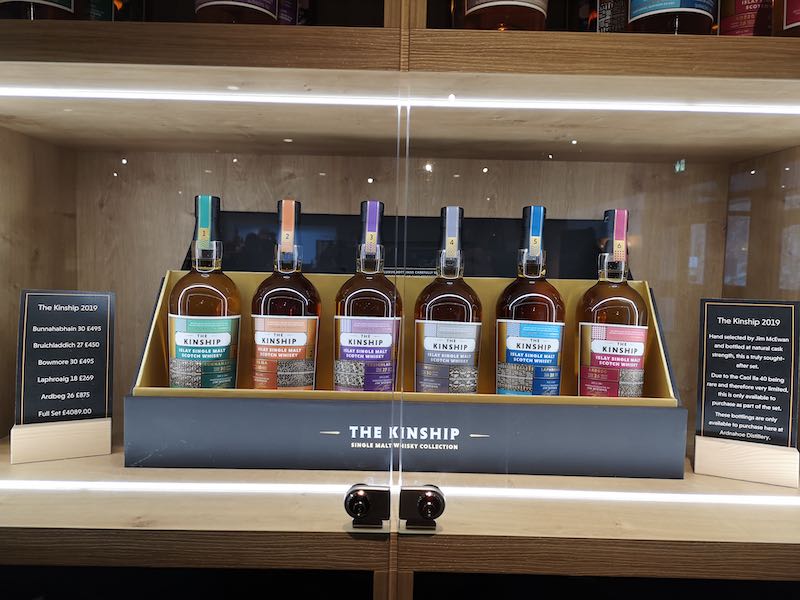
The full set of Kinship Bottles
We saw many Hunter Laing bottlings for sale, including the much sought-after Kinship bottles (picture above). However, nothing intrigued us more than a bottle of Laphroaig 12 Years Old as it was their shop exclusive. We eventually returned to buy that bottle to bring home with us.
The Beginning of the Tour
Our guide came to us shortly after to bring us into the first room for our 10 am tour. With us was just one other couple from the United States of America, and we had a fantastic time interacting with one another. We met the same couple at Laphroaig and Ardbeg too! It was great fun to make new whisky friends and trade drams and stories. Whisky unites!
The owners of Ardnahoe
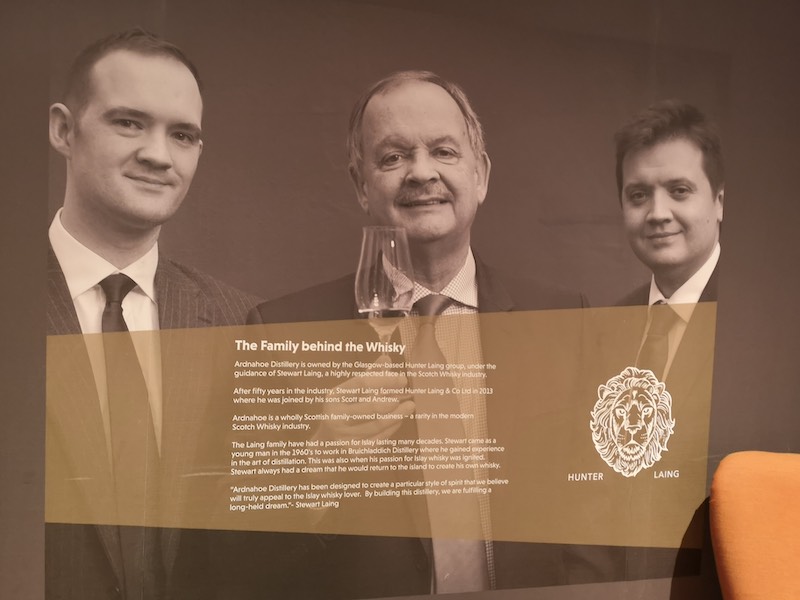
The family behind Ardnahoe
Spread across the entire wall in the first room was the history of Ardnahoe. First and foremost, we wanted to talk about the family behind the distillery. Fully owned by Hunter Laing Group, the owners of Ardnahoe are none other than Stewart Laing, a familiar name in the Scotch whisky industry and his two sons, Scott and Andrew Laing.
Stewart Laing founded the Hunter Laing Group in 2013, after fifty years in the industry. He first started his career at the Bruichladdich distillery, and later on, appeared to work with his family business. In 2013, Stewart decided to venture out on his own to create a new legacy with his sons.
Ardnahoe was a dream come true for Stewart. He dreamt of returning to Islay after all these years to set roots down on the island that ignite his passion for whisky. His dream finally took shape in the building of Ardnahoe.
A short history of Loch Ardnahoe
The distillery takes its name from the nearby Loch that supplies the clean, crisp water for distillation. The building is purposely nestled into the hills close to the Loch for its heights. It was quite a sight to drive up to the distillery. The winding roads up the hill gave breathtaking views at every turn, and the tiny roads gave much excitement whenever a car appeared from the other direction. The elevation allows one to take in the sights of the Paps of Jura over the other side of the sea as well, giving visitors magnificent views of the Paps.
According to our guide, Irish monks came to Islay in the 14th century and introduced the art of distillation to the islanders after they saw how suitable Islay was for whisky production. Incidentally, generations of families in the Ardnahoe region illicitly distilled their own whisky using traditional techniques and handmade copper worm tubs. The 1644 Excise Act forced these people to “disappear” into the hills and forests, taking their equipment with them to continue illicit distillation. As a result, every step of the distillation progress was done by hand from barley to peat to water.
A note about Loch Ardnahoe
Loch Ardnahoe is said to be the deepest loch on Islay, but nobody truly knows its depth. Perhaps nobody wanted to try as the risks are high. The water in the loch is soft and filters through thousand years old peat and rock. Ardnahoe distillery uses this amazingly soft water for all its distillation needs.
Behind the First Room
After the history of Ardnahoe, our guide took us behind the first room, and into the production hall. He went through the safety brief as required, and very quickly, the five of us made our way to the first stop – the Bobby Mill.
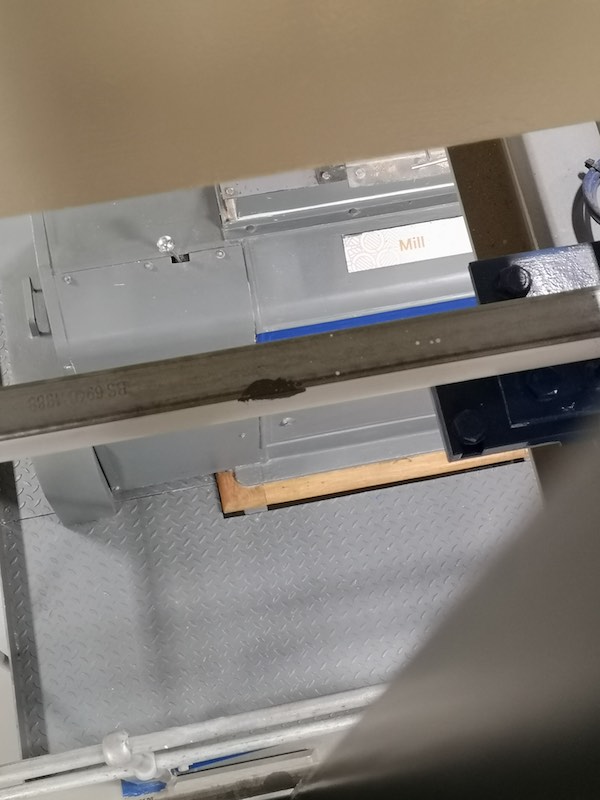
The Legendary Bobby Mill
The Bobby mill at Ardnahoe is the third one that we met so far, having been to Bruichladdich Distillery and Ardbeg Distillery earlier. As mentioned in the article on Ardbeg, the Bobby mill is precious to their owners as it is fully manual. Only four mills exist. The last mill is at Glen Scotia Distillery, located in Campbeltown.
The First Step – Malting the Barley
Ardnahoe is a modern distillery with limited space, which means it does not have its own malting floor. They buy barley from mainland Scotland, and Port Ellen Malting helps them to malt and smoke the barley to 40ppm. The peat comes from Castle Hill, which is known to be floral, and the team hand-cuts the peat for maximum effects.
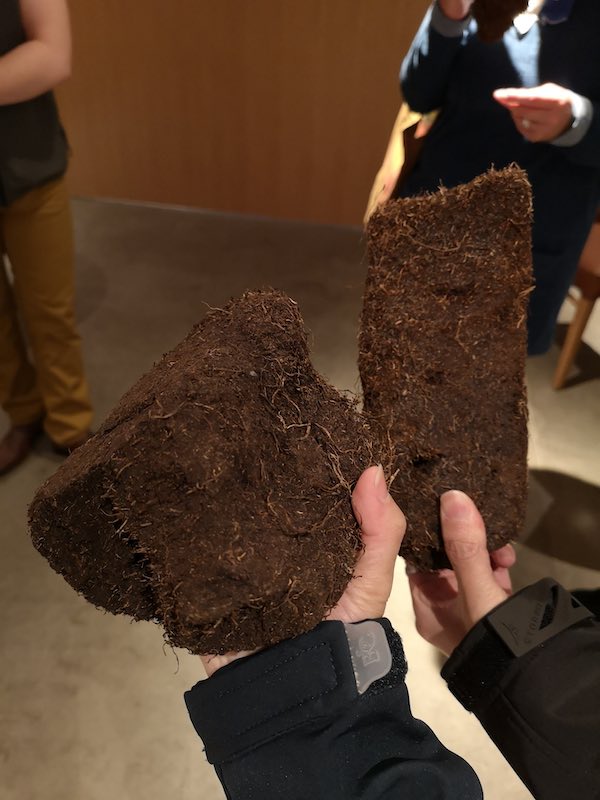
Peat from Castle Hill
Port Ellen Malting delivers 28 tons of barley every week, and the team at Ardnahoe sets the Bobby mill to work. After milling the barley to the right ratio, they store the barley in a 2.5tons grist bin.
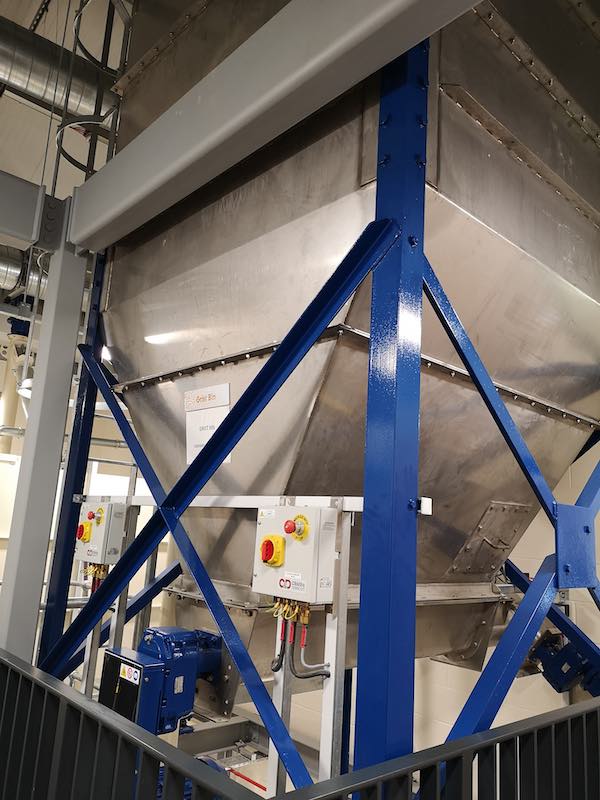
Grist Bin
Similar to most distilleries, Ardnahoe mills the barley into 70% grist, 20% husk and 10% flour. The maltster at the distillery weighs 100g of milled barley to check the ratio. It is a difficult job as one requires a lot of experience to know how to check the ratio. The maltster also needs to be accurate in his calculation as the Bobby mill is manual and does not have a control panel.
Onwards to the Mash Tun
Once the team completes the milling process, the barley runs along to the mash house, where they enter the first procedure on their way to becoming whisky.
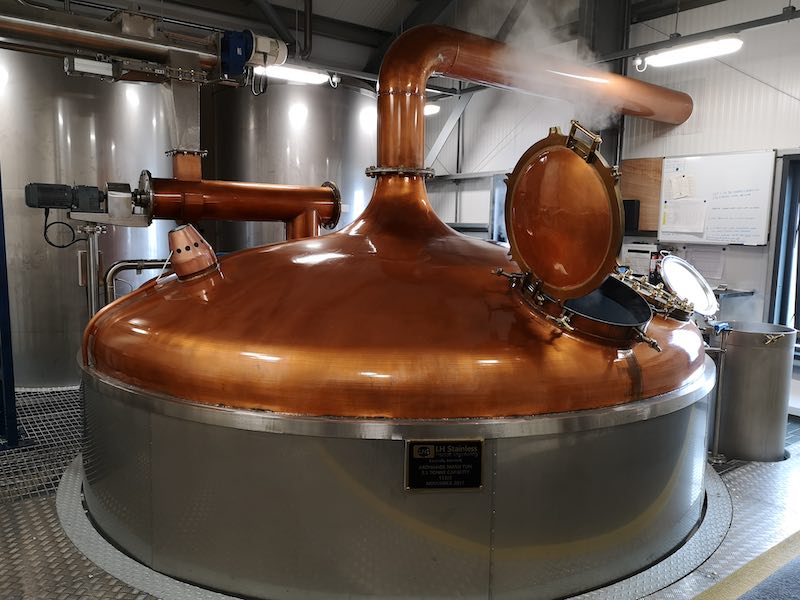
Semi Lauter Mash Tun
Ardnahoe distillery enlists a 2.5 tons semi-lauter mash tun to turn barley into wort or sugar water. Three steams of water go into the mash tun at various temperatures. The first water (10,500 litres) goes into the mash tun at 63-64 degrees C, and drains before the second steam of 3,000 litres goes in at 80 degrees C. The last steam of water (8,500 litres) goes in at 90 degrees C.
The end result is wort or sugar water, and it is cooled to between 18 to 23 degrees C before it gets pump into the Oregon pine wood washback. The remaining draff (spent barley) is channelled to the local farms to feed the cows!
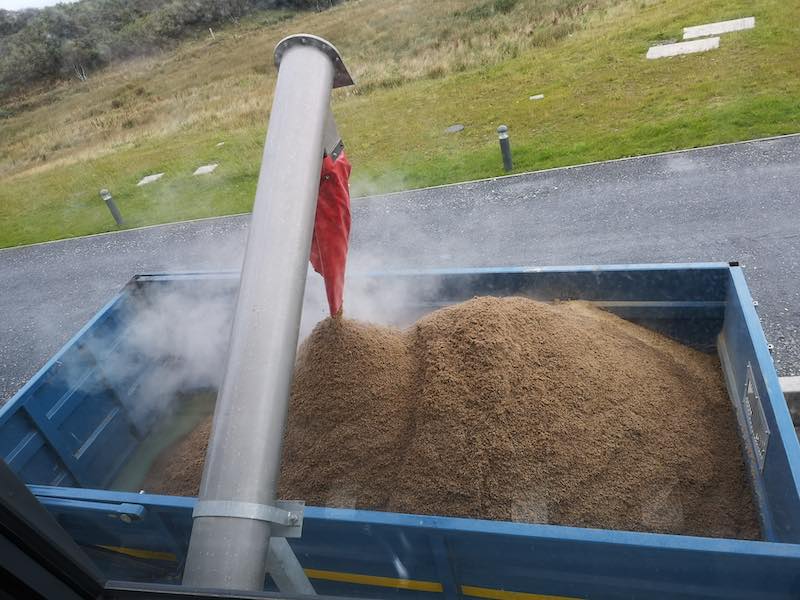
Draff
The Place of Fermentation
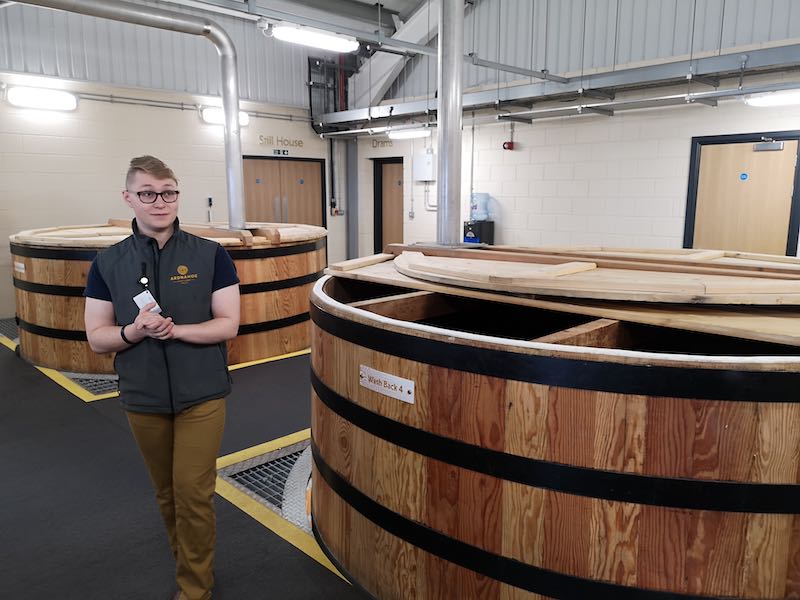
The Washbacks of Ardnahoe
The wort that goes into the washback then gets fermented. One Oregon pine wood washback holds 12,500 litres of wort. The distillery uses 40 tons of yeast for each fermentation cycle. Once the team adds the yeast, the fermentation hours starts and the cycle completes after 70 hours. Most fermentation cycles are around 50 hours, but Ardnahoe increases their fermentation to 70 hours to extract more ethers and flavours from the wort. The completed fermentation yields wash at around 7-9% abv.
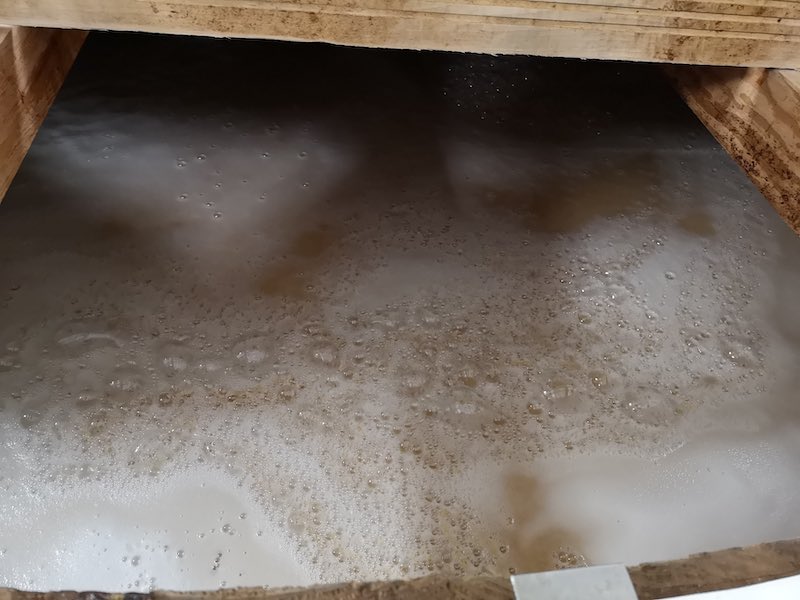
Yeast in Action
The fermentation in Ardnahoe was fascinating partly because the smell was pretty aromatic. Unlike some of the other distilleries where fermentation was a smelly affair, the washbacks in Ardnahoe smells good. It is a pity, however, that we could not taste the wash. It would, otherwise, be a very eye-opening experience!
The Still House and the Paps of Jura
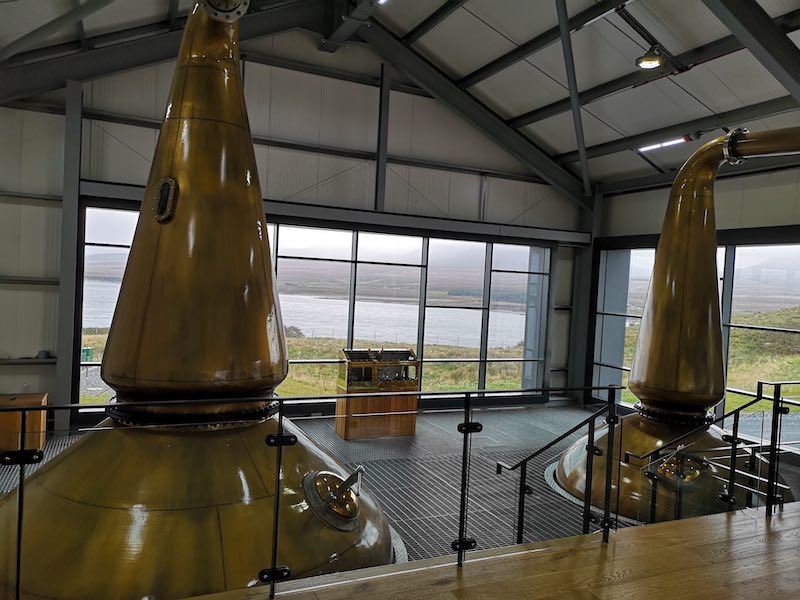
Stills of Ardnahoe
Ardnahoe has a pair of stills with the capacity of 12,000 litres. When the wash goes into the wash still, the team heats it up to about 90-92 degrees C to start the distillation process. The still has a 7 meters long lyne arm which encourages reflux. The lyne arm is connected to worm tub #1 outside the distillery which acts as a condenser. The liquid that exits the worm tub is now called low wines and it feeds into the spirit still.
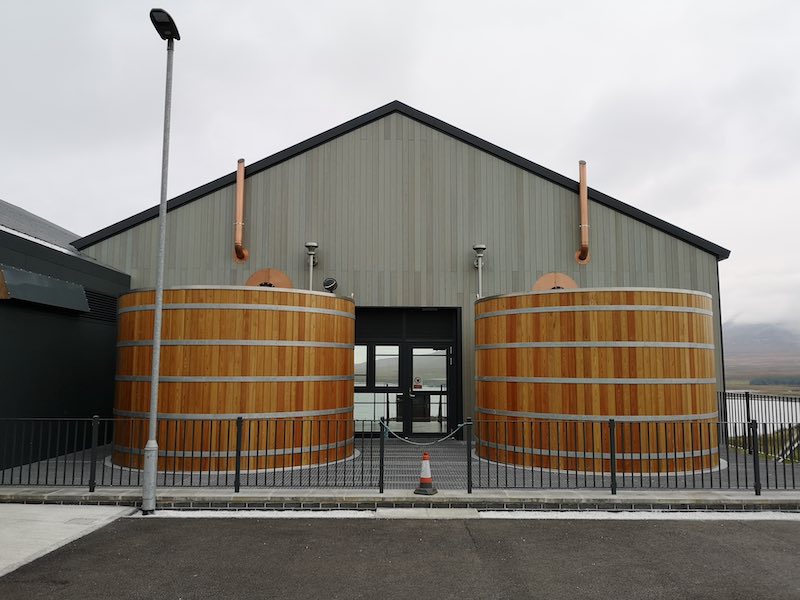
The Worm Tubs
The process repeats in the spirit still and the liquid goes into worm tub #2 before condensing into new make. The new make makes its way into the spirit safe. Ardnahoe takes its cut of the spirit between 68% to 63% abv. The head is 69% and above, while the tail is 62% and below. Both head and tail go back to the wash still for the next distillation.
Many people told us how magnificent the views are in the Still House of Ardnahoe. Unfortunately, we visited on a gloomy, rainy morning and all we could see were low clouds over the Paps of Jura. While the weather did not do us a favour that day, we enjoyed the cold and the rain!
Back at the visitor centre
As Ardnahoe currently sells some of its casks to individuals and brokers, we were not able to visit their warehouse unless we are cask owners. Therefore, we headed back to the visitor centre where our guide promised us a couple of drams to warm us up!
Once we got back to the warmth of the visitor centre, our guide took us to another room where about six to eight bottles sat patiently. All of them were from the Hunter Laing series. In case some of you are wondering, Hunter Laing Group is an independent bottler. They buy casks from other distilleries and bottles them under their name. One popular series under the Hunter Laing Group is the Hepburn’s Choice.
It is from one of the Hepburn’s Choice series that I chose a Tamdhu Bourbon cask. Tamdhu, as we know it, bottles exclusively in sherry casks. It was, therefore, pretty exciting to see a bourbon Tamdhu! I was quick to spot the rare dram and chose it as my complimentary dram. (We had another amazing Tamdhu bourbon cask last year in Taiwan too, but that’s another story for another day!)
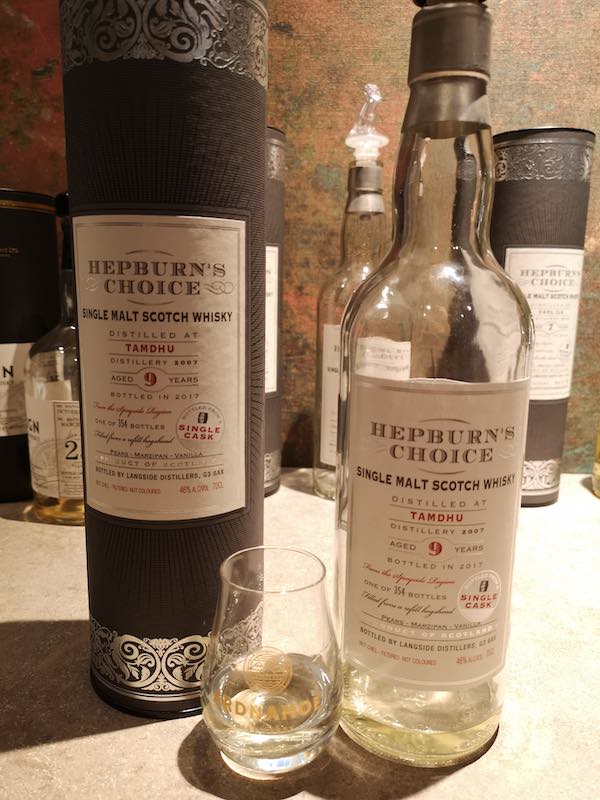
Tamdhu 2007 9 Years Old Bourbon
Looking at how low the fill level is, we know that this is a popular bottle. Despite the young age, the Tamdhu presented itself strongly with vanilla cream, coconut, fresh apples and a hint of oak. I enjoyed it so much that our guide poured me a second dram of that!
The other WhiskyGeeks member chose a Scarabus, a mystery Islay single malt. While we did not know for sure what the dram was, we had a lot of fun guessing it. Our final guess was Lagavulin, but our guide refused to confirm or deny it.
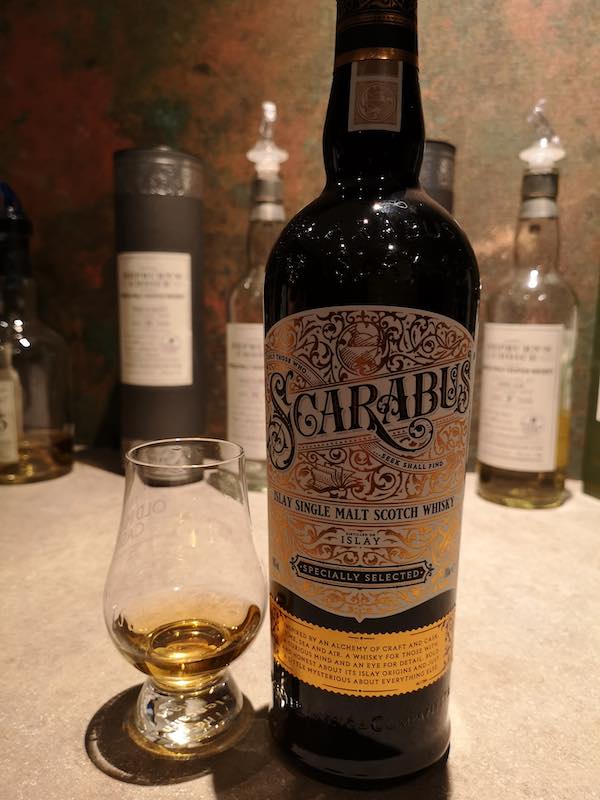
Scarabus
Our guide enjoyed our company so much (I think!) that he offered us a second dram! As he had already poured me a second dram of the lovely Tamdhu, I did not take advantage of the “second dram”. My partner chose another Hepburn’s Choice for his second dram, one that is named “Nice N Peaty”.
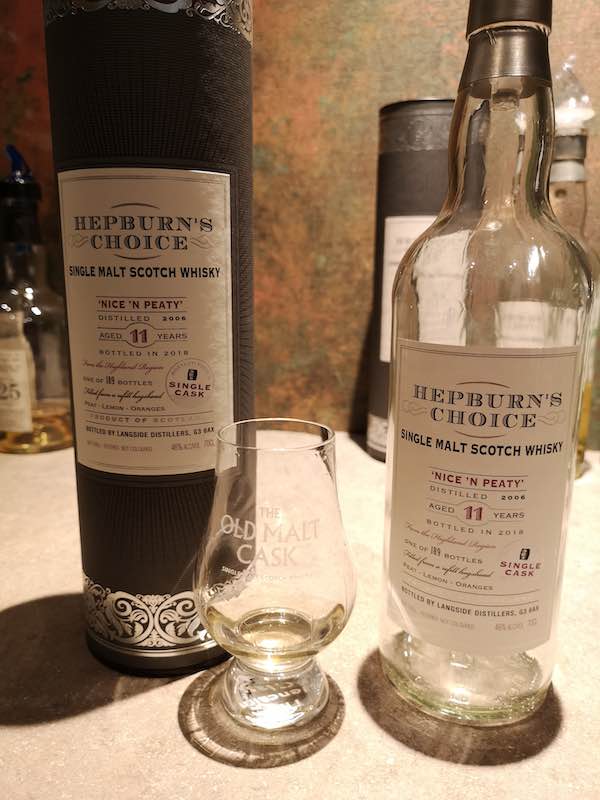
Nice N Peaty 2006 11 Years Old
The mysterious whisky in this bottle had us arguing for some time. All of us could not agree on the distillery. While we had no conclusion, it was great fun talking about it with our new-found friends from the USA.
All good things came to an end, and we eventually had to bring our remaining drams out to the shop as our guide prepared for the next tour. The shop and cafe, however, provided us with another surprise.
The Ardnahoe Cafe
Once in the cafe, we took in the views and were really awed by the majesty of nature on Islay.
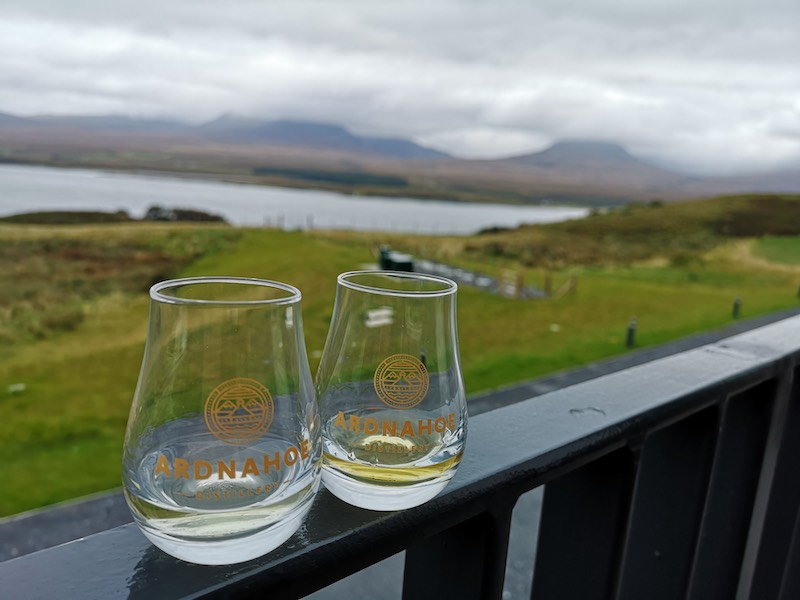
The Paps of Jura
Braving the cold once again, we walked out into the crisp, cold air outside the cafe and took this picture of the Paps of Jura. Due to the weather, the low-lying clouds hid the summits of the Paps, but we could still see them in all their majesty across the sea.
Lunch was simple and yet delicious, with a sandwich that filled the tummy up really well! The experience at Ardnahoe was excellent and we appreciate the friendliness of the team at the distillery. We hope to visit the distillery again in the future as we learnt that there are more tours available now, including one that goes to the warehouse!

